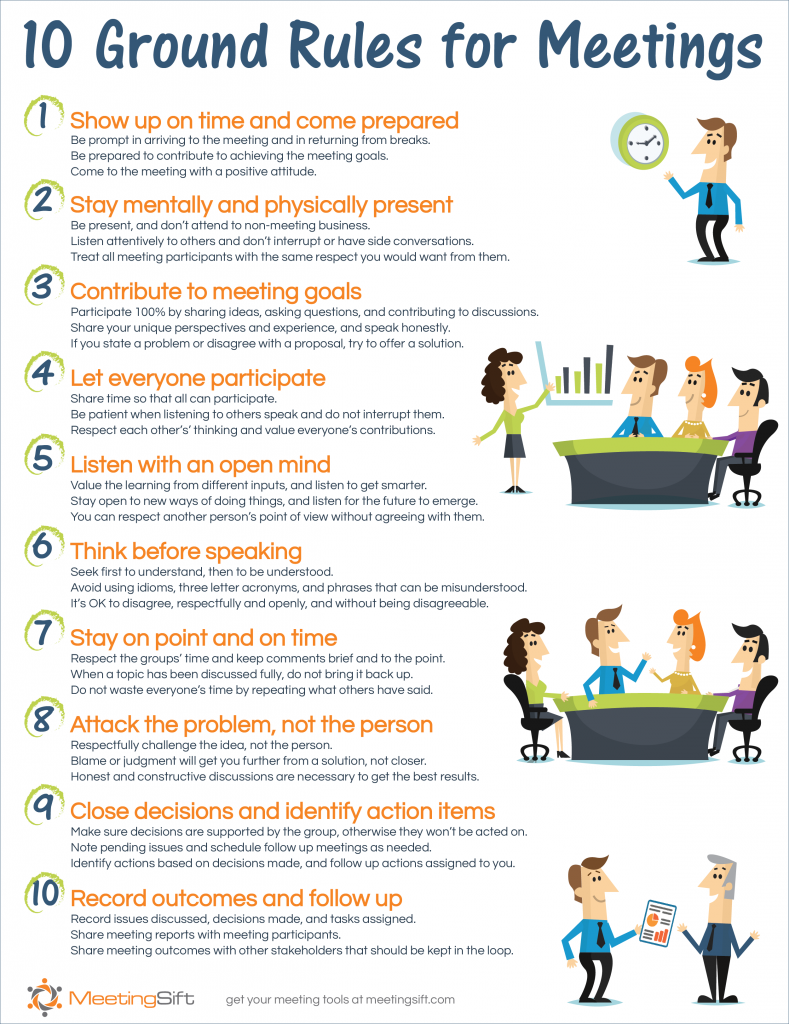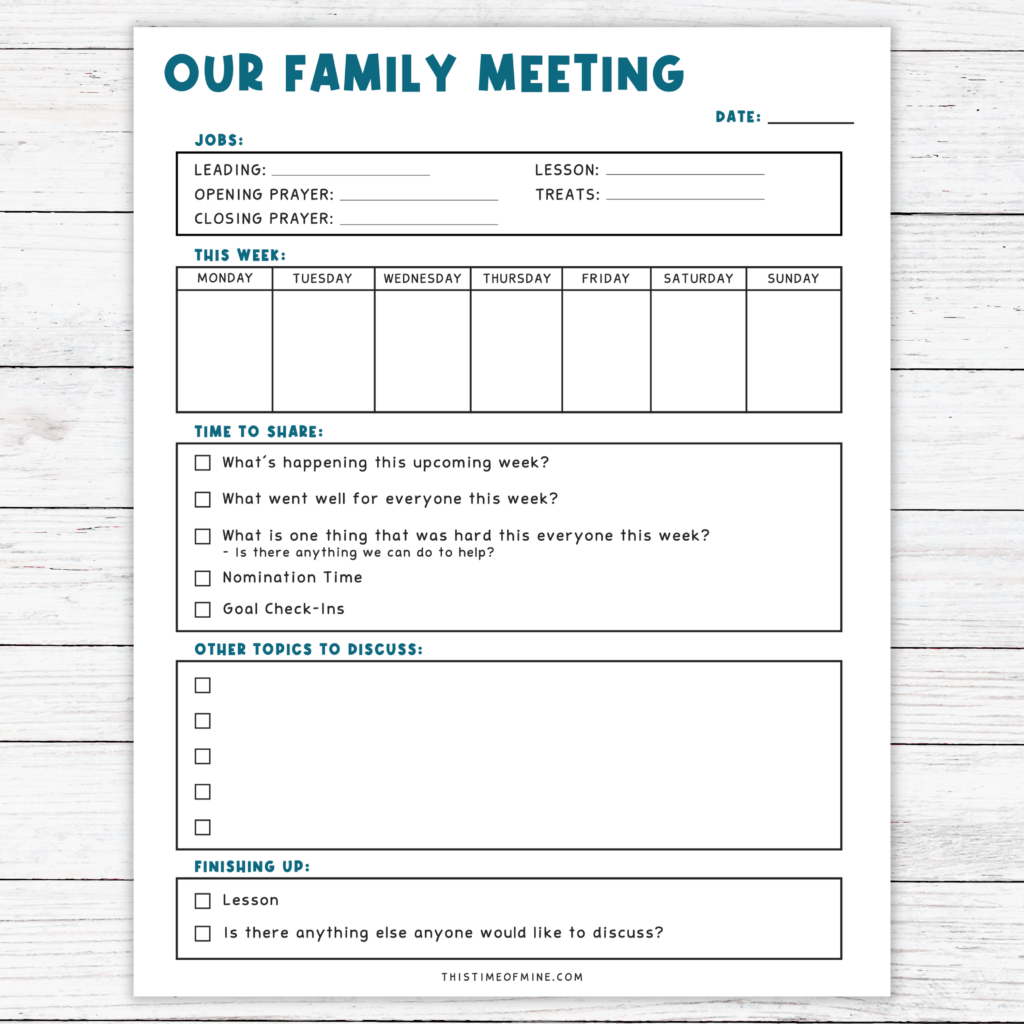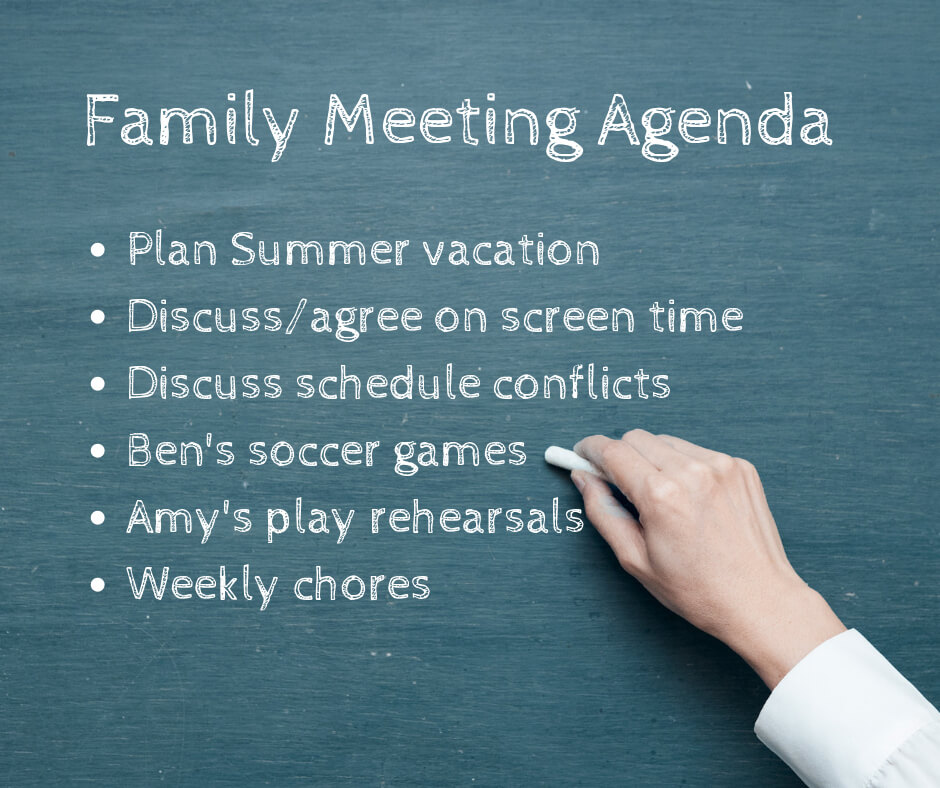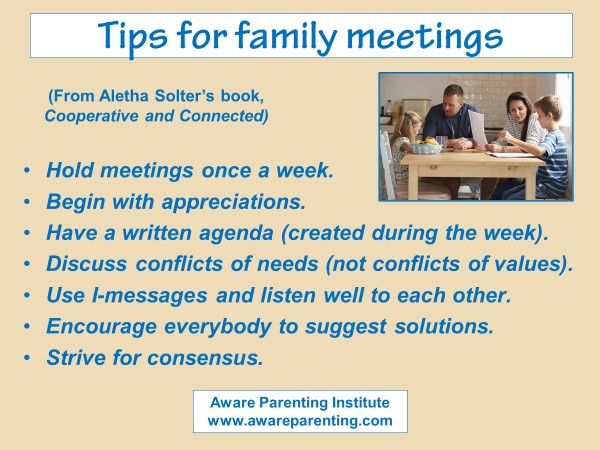How to organize effective family meetings

How to Organize Effective Family Meetings
In today’s fast-paced world, maintaining strong family bonds and effective communication can be challenging, especially for middle-aged individuals juggling multiple responsibilities. Family meetings provide a structured platform for discussing important issues, fostering collaboration, and strengthening relationships. Here’s a comprehensive guide on how to organize effective family meetings tailored to the needs and lifestyle of middle-aged individuals in the United States.

Introduction to Family Meetings
Family meetings are not just about addressing problems; they are also about building a stronger, more cohesive family unit. These gatherings can help in planning, problem-solving, and expressing appreciation for one another. By incorporating regular family meetings into your routine, you can improve communication, resolve conflicts more effectively, and create lasting memories.

Benefits of Family Meetings
-
Improved Communication: Regular meetings encourage open dialogue, ensuring that everyone’s voice is heard and valued.
-
Problem-Solving: Collaborative discussions help in finding solutions to family challenges.
-
Strengthened Bonds: Sharing experiences and expressing gratitude foster deeper connections among family members.
-
Enhanced Responsibility: Meetings promote a sense of shared responsibility and teamwork.
-
Emotional Support: They provide a platform for emotional support, especially during challenging times.

Planning Effective Family Meetings

1. Set a Regular Schedule
-
Frequency: Hold meetings weekly or bi-weekly, depending on your family’s needs and schedule.
-
Timing: Choose a consistent time that works for everyone, such as after dinner or on weekends.
-
Use Technology: Utilize calendar apps to set recurring events and reminders.

2. Create a Comfortable Atmosphere
-
Location: Select a comfortable and distraction-free space where everyone feels at ease.
-
Activities: Begin with a fun activity or game to set a positive tone.
-
Seating: Arrange seating to encourage participation and minimize distractions.

3. Establish Ground Rules
-
Respectful Dialogue: Encourage active listening and respectful communication.
-
One Speaker at a Time: Ensure only one person speaks at a time to avoid interruptions.
-
No Criticism: Emphasize that meetings are not for criticism but for constructive feedback.

4. Develop a Clear Agenda
-
Focus on Key Topics: Identify two to three main issues to discuss each meeting.
-
Time Allocation: Allocate specific times for each topic to keep discussions focused.
-
Allow for Questions: Leave space for questions and open discussion.

5. Encourage Participation
-
Rotate Roles: Rotate roles such as leader, secretary, and timekeeper to involve everyone.
-
Active Listening: Encourage all family members to listen attentively and respond thoughtfully.
-
Celebrate Successes: Acknowledge and celebrate achievements and positive behaviors.

6. Keep Meetings Short and Sweet
-
Duration: Limit meetings to 20-30 minutes, especially if you have young children.
-
Flexibility: Be flexible and adapt the meeting format as needed.

Structuring Your Family Meeting

Step 1: Express Appreciation
-
Begin by expressing gratitude towards each other for recent help or support.
-
Encourage each member to thank someone for something they appreciate.

Step 2: Review Previous Agreements
-
Discuss any decisions or tasks agreed upon in previous meetings.
-
Check if these have been implemented and provide feedback.

Step 3: Discuss Current Issues
-
Address any current challenges or problems that need attention.
-
Use problem-solving steps to find solutions together.

Step 4: Plan for the Future
-
Discuss upcoming events or changes that may affect the family.
-
Make plans and set goals for future family activities or projects.

Step 5: End on a Positive Note
-
Conclude the meeting by acknowledging progress and expressing encouragement.
-
End with a positive note or a fun activity to maintain a positive atmosphere.

Managing Conflict in Family Meetings
-
Stay Calm: Encourage calm and respectful dialogue even in disagreement.
-
Listen Actively: Ensure everyone feels heard by actively listening to their concerns.
-
Seek Common Ground: Focus on finding solutions that work for everyone.
-
Set Clear Expectations: Establish clear expectations and consequences for behavior.

Involving All Family Members
-
Encourage Participation: Make sure all members, including children, have a chance to contribute.
-
Rotate Leadership: Rotate leadership roles to give everyone a chance to lead and learn.
-
Respect Opinions: Value the opinions and ideas of all family members, regardless of age.

Using Family Meetings for Senior Care Coordination
If your family is involved in caring for elderly relatives, family meetings can be particularly beneficial:
-
Coordinate Care: Use meetings to discuss caregiving responsibilities and ensure everyone understands their role.
-
Emotional Support: Provide emotional support to caregivers and seniors alike.
-
Address Changing Needs: Regularly review and adjust care plans as needed.

Conclusion
Organizing effective family meetings is a powerful way to strengthen family bonds, improve communication, and address challenges collaboratively. By following these practical steps and tailoring them to your family’s unique needs, you can create a positive and supportive environment that fosters growth and connection among all members.

Additional Tips for Middle-Aged Individuals
As a middle-aged individual, you may face unique challenges such as balancing work, family responsibilities, and possibly caring for aging parents. Here are some additional tips to consider:
-
Be Flexible: Life can be unpredictable, so be prepared to adjust meeting schedules or formats as needed.
-
Use Technology: Utilize digital tools to keep track of meeting notes, schedules, and reminders.
-
Prioritize Self-Care: Ensure that family meetings also address individual needs and stress management strategies.
-
Involve Extended Family: Consider involving extended family members in meetings to foster broader family connections.
By incorporating these strategies into your family meetings, you can create a more resilient and supportive family environment that benefits everyone involved.








